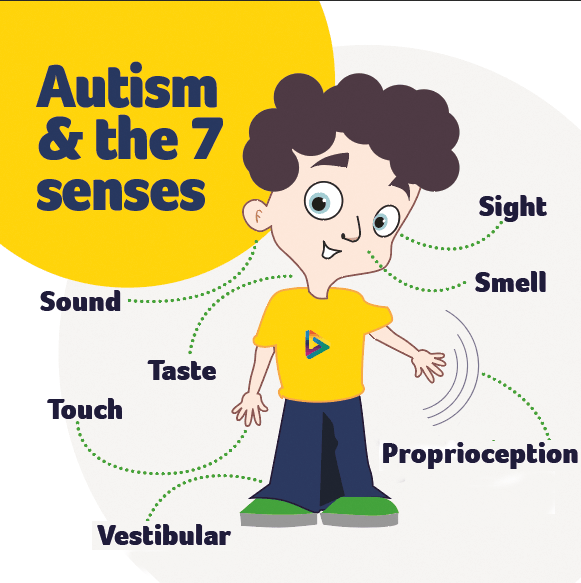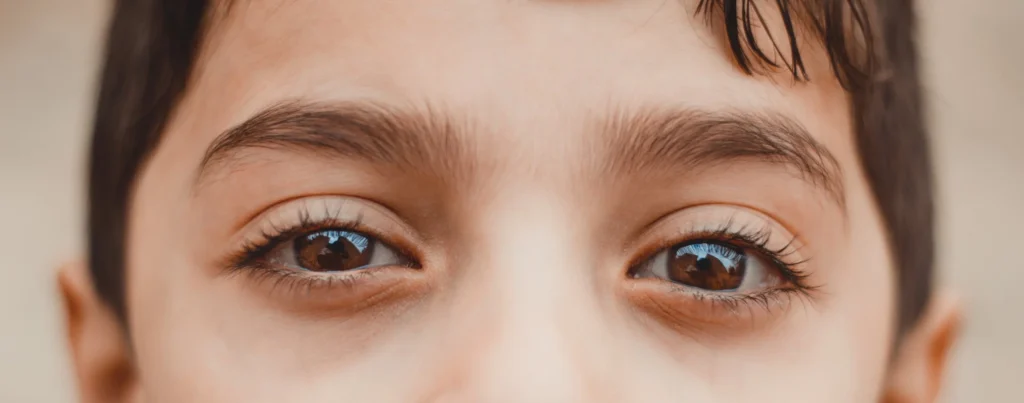The human body is complex, with various systems working seamlessly together to ensure optimal function. Among these systems, the vestibular system holds a particularly vital role, serving as the body’s internal balance and spatial orientation mechanism.
For individuals on the autism spectrum, this intricate system can face significant challenges, leading to what is termed as vestibular dysfunction in ASD (Autism Spectrum Disorder). In this comprehensive exploration, we delve into the vestibular system, how autism affects it, and the implications for individuals living with this condition.
1. An Overview of the Vestibular System

Image courtesy of: https://pressbooks.umn.edu/sensationandperception/chapter/vestibular-transduction-draft/
The vestibular system is a complex network of structures located within the inner ear, primarily comprising the semicircular canals and the otolith organs. These organs play a crucial role in detecting changes in head position and movement, as well as gravitational forces, thereby providing the brain with essential information for maintaining balance and coordinating movements.
Within the semicircular canals, fluid-filled channels are arranged in three orthogonal planes, allowing for the detection of rotational movements in different directions. The otolith organs, consisting of the utricle and saccule, detect linear acceleration and gravitational forces, providing information about changes in head position relative to gravity.
Together, these vestibular organs work with other sensory systems, such as vision and proprioception, to provide a comprehensive representation of the body’s position and motion in space. This integration of sensory inputs is essential for activities ranging from simple tasks like standing upright to more complex movements like walking and running.
2. How Autism Interacts with the Vestibular System

Autism Spectrum Disorder is a neurodevelopmental condition characterized by difficulties in social communication, repetitive behaviors, and sensory sensitivities. While there are still many unknowns regarding Autism, research has increasingly pointed towards atypical sensory processing as a core feature of the condition.
Individuals with autism often exhibit differences in sensory processing, which can manifest as hypersensitivity or hyposensitivity to various stimuli, including vestibular input. Studies have shown alterations in the structure and function of the vestibular system in individuals with autism, suggesting a potential link between sensory processing abnormalities and vestibular dysfunction.
One hypothesis states that the atypical sensory processing observed in autism may stem from differences in neural connectivity and sensory integration. Dysfunction within the vestibular system could disrupt the processing and integration of sensory inputs, leading to difficulties in perceiving and responding to environmental cues effectively.
3. Postural Instability

One of the hallmark features of vestibular dysfunction in ASD is postural instability. The ability to maintain an upright posture relies heavily on the vestibular system’s capacity to detect changes in body position and make rapid adjustments to counteract gravitational forces. However, individuals with autism may experience difficulties in integrating vestibular input, leading to challenges in posture control and stability.
Children with autism often exhibit poor balance and coordination, frequently appearing clumsy or unsteady during activities that require motor skills. Postural instability can significantly impact various aspects of daily life, including participation in physical activities, navigating uneven terrain, and engaging in social interactions that involve movement.
Moreover, postural instability can contribute to feelings of discomfort and insecurity, further exacerbating sensory sensitivities and anxiety in individuals with autism. Addressing postural challenges through targeted interventions, such as vestibular stimulation exercises and balance training, may help improve stability and enhance overall functioning.
4. Gait Dysfunction: Struggling with Locomotion

Gait dysfunction is another common manifestation of vestibular dysfunction in individuals with autism. Gait refers to the pattern of walking, encompassing the coordination of limb movements and maintaining balance during locomotion. The vestibular system plays a critical role in regulating gait by providing feedback on body position and motion.
Children and adults with autism may display abnormal gait patterns, such as toe walking, stiff or rigid movements, and difficulty with alternating steps. These gait abnormalities can significantly impact mobility and independence, potentially hindering participation in recreational activities and daily routines.
Furthermore, gait dysfunction may contribute to social difficulties and stigmatization, as atypical walking patterns may draw unwanted attention and scrutiny from peers. Addressing gait abnormalities through physical therapy and gait training interventions can help improve functional mobility and promote greater participation in everyday activities.
5. Impaired Gaze

The vestibular system is closely linked to eye movements and gaze stabilization, allowing individuals to maintain visual focus during head movements. However, vestibular dysfunction in ASD can disrupt this coordination, leading to impaired gaze control and difficulties with visual tracking.
Individuals with autism may demonstrate atypical eye movements, such as rapid shifts or difficulties maintaining steady fixation on objects. These gaze abnormalities can significantly impact visual attention, spatial perception, and social interactions, contributing to challenges in interpreting facial expressions and nonverbal cues.
Moreover, impaired gaze control can affect academic performance and learning, as individuals may struggle to follow along with visual presentations or maintain attention during classroom activities. Addressing gaze abnormalities through visual-motor training and sensory integration therapy can help improve visual tracking and enhance overall visual processing skills.
6. Untreated Vestibular Dysfunction
The consequences of untreated vestibular dysfunction in individuals with autism can be far-reaching. Beyond the immediate challenges of postural instability, gait dysfunction, and impaired gaze, vestibular abnormalities can impact overall sensory processing and contribute to sensory overload and anxiety.
Without intervention, vestibular dysfunction can hinder participation in daily activities, limit social engagement, and impede academic and occupational performance. Moreover, the cumulative effects of sensory difficulties can exacerbate behavioral challenges and lead to increased stress and frustration for individuals with autism and their families.
Recognizing the pervasive impact of vestibular dysfunction on individuals with autism underscores the importance of early detection and targeted interventions. Multidisciplinary approaches that address sensory processing differences and promote sensory integration can help mitigate the effects of vestibular dysfunction and improve overall quality of life for individuals on the autism spectrum.
In conclusion, the intricate interplay between autism and the vestibular system highlights the need for comprehensive support and intervention strategies. By addressing vestibular challenges and promoting sensory integration, we can empower individuals with autism to navigate the world with greater confidence, autonomy, and resilience.
